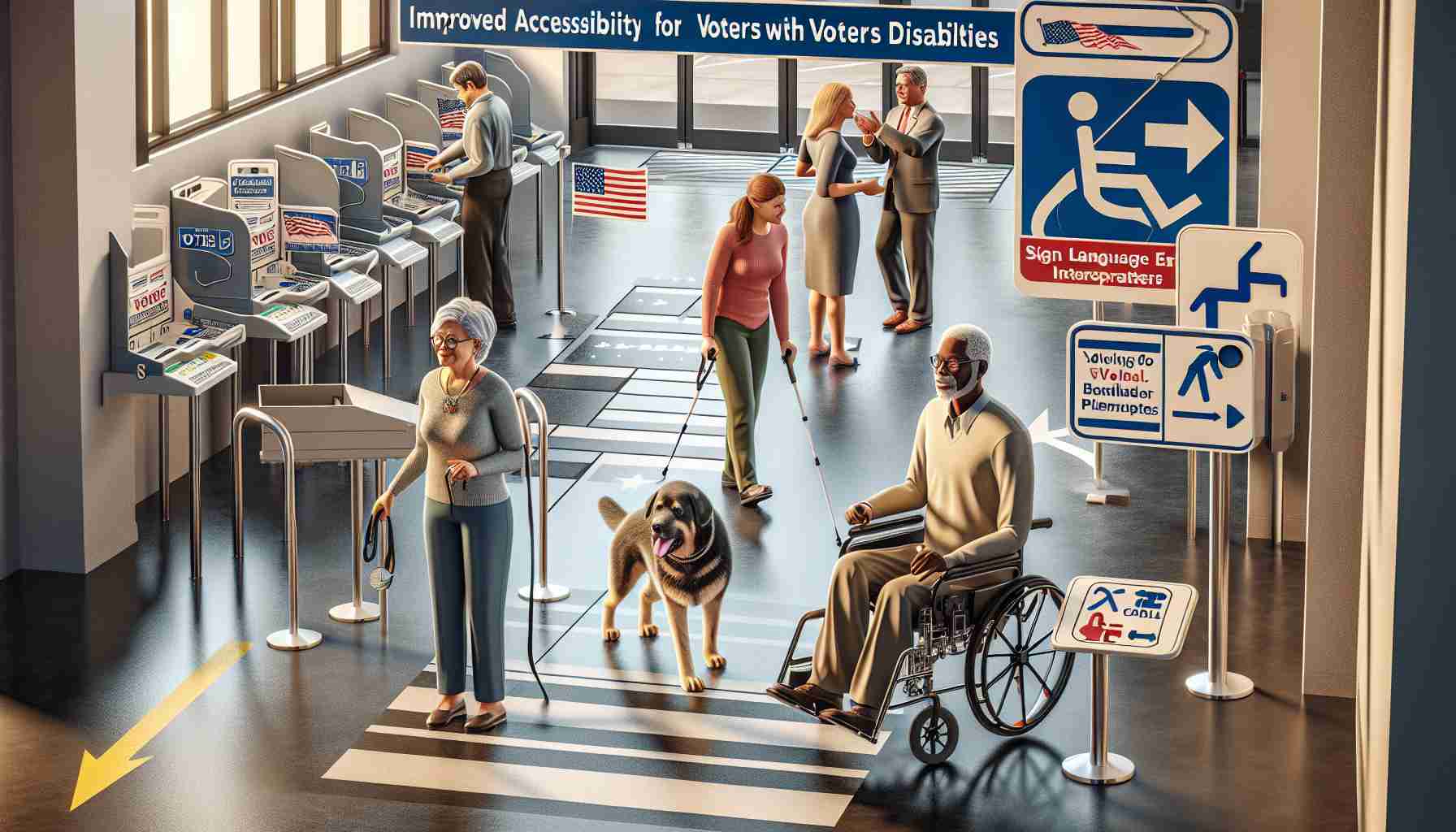
As early voting launches in Iowa, a satellite polling station has been established to significantly improve accessibility for disabled voters. Situated at the Central Iowa Center for Independent Living within Park Fair Mall, this polling location is designed to create a more inclusive voting environment.
For individuals with visual impairments, like Mary Sheetz, traditional ballots can be extremely challenging to navigate. At this center, specialized voting machines are available that provide audio guidance via headphones, allowing users to easily follow along as they make their selections. The machines are user-friendly, featuring a keypad that functions similarly to a television remote, making the voting process simpler for everyone.
Unlike standard polling locations that may have limited resources, this site boasts a variety of advanced voting machines aimed at ensuring everyone can participate without barriers. Research indicates that disabled individuals represent one of the fastest-growing groups of voters in the nation, emphasizing the importance of such initiatives.
Visitors expressed their gratitude for the convenient setup, noting that it saves them from the hassle of traveling to a county office and dealing with long lines. Poll workers at the site reiterated the importance of creating a welcoming space for all voters, acknowledging that the independence to cast a ballot is a vital part of democracy.
Although this particular polling station was operational for only one day, it highlighted the commitment to accessible voting throughout Iowa’s election process.
Enhanced Accessibility for Disabled Voters in Iowa: A Closer Look
As Iowa embraces the importance of accessibility in the electoral process, the establishment of dedicated polling stations signifies a pivotal shift in how the state accommodates disabled voters. While recent efforts have garnered attention, there are deeper layers to this initiative that merit exploration.
What Additional Resources Are Available for Disabled Voters?
In addition to the specialized voting machines found at the Central Iowa Center for Independent Living, Iowa has introduced other resources such as trained poll workers who understand the needs of disabled voters. These workers receive specific training on how to assist individuals with various disabilities, ensuring a more supportive environment. Websites like iowa.gov offer comprehensive resources that detail voting procedures for individuals with disabilities.
What Are the Key Challenges and Controversies?
Despite progress, several challenges remain. One significant issue is the inconsistency in accessibility across different polling locations. Not all sites have the same resources or trained staff, potentially leading to voter disenfranchisement. Furthermore, many advocacy groups argue that while temporary measures such as satellite stations are beneficial, a more permanent solution is required to create universally accessible polling places.
What Are the Advantages and Disadvantages of Enhanced Accessibility?
Advantages:
1. Increased Voter Participation: By improving access, more individuals with disabilities can confidently cast their votes, contributing to higher overall participation rates.
2. Inclusivity of the Democratic Process: Enhanced accessibility fosters a more inclusive society, ensuring that every voice is heard in the democratic process.
Disadvantages:
1. Short-Term Solutions: Initiatives like temporary polling stations may not address long-term accessibility needs and can create an illusion of adequacy without solving underlying issues.
2. Resource Allocation: Implementing specialized equipment and training for poll workers requires significant investment, raising concerns about the allocation of state resources and whether this can be sustained.
How Can Iowa Sustain These Efforts Moving Forward?
For Iowa to continue making strides in enhancing accessibility for disabled voters, it must prioritize long-term strategies that include permanent accessible voting locations, continuous training for election officials, and sustained funding for necessary technologies. Engaging with advocacy groups will also provide invaluable insight into the needs of disabled voters, ensuring that their rights are upheld in every election.
Conclusion
The journey toward fully accessible voting in Iowa is ongoing. While progress has been made, it is essential to confront existing challenges and fiercely advocate for the rights of disabled voters. The commitment to creating an inclusive electoral process will ultimately strengthen democratic participation and ensure that everyone has a say in shaping their communities.
For more information on voting resources and accessibility initiatives, visit nass.org and ncd.gov.



